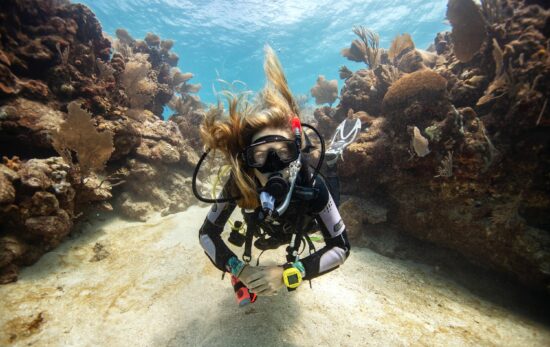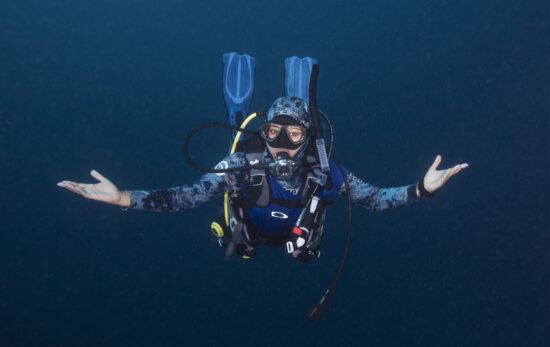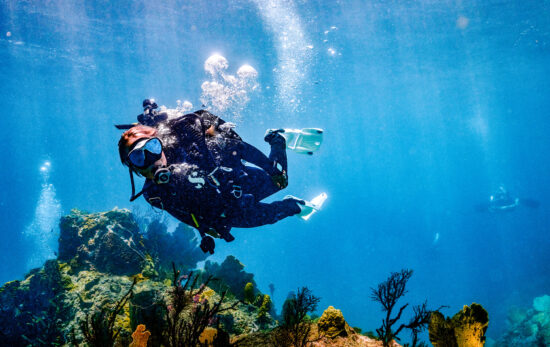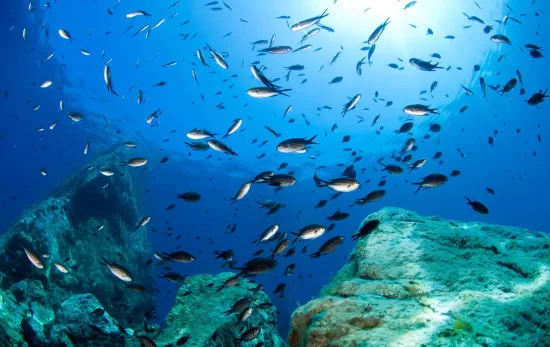If you love sharing your passion for the underwater world and want to live an extraordinary life, why not become a scuba instructor? It’s one of the most rewarding full-time or part-time jobs you can have.
Quite honestly, I’m a bit upset ‘scuba instructor’ does not commonly appear on the list of things you can be when you grow up. With all due respect to doctors, lawyers and firefighters, scuba instructors transform lives and play a vital role in environmental conservation.
Read on to learn how you can have a meaningful career, travel the world and make the most of your time on this ocean planet – as a PADI Scuba Instructor.
Courses Required Before Becoming a PADI Instructor
To become a PADI Instructor is no easy feat. However, if you love diving and are committed, it can be a breeze and a ton of fun as well. Of course, you can’t just start teaching other divers how to dive right after your Open Water Diver certification course. Instead you need to complete a task list of courses and pre-requisites, so every diving candidate is safe and cared for by a properly trained PADI Professional.
Required Courses
- Open Water Diver
- Advanced Open Water Diver
- Rescue Diver
- Emergency First Response (EFR)
- Divemaster
- Instructor Developement Course (IDC)
Although this may look like a lot, each one of these courses plays a crucial part in your development to becoming an instructor. Once you’ve completed these courses, you’re on your way to getting your first PADI Instructor position anywhere in the world! Listed below, we have a step-by-step guide to completing your IDC and where it can take you.
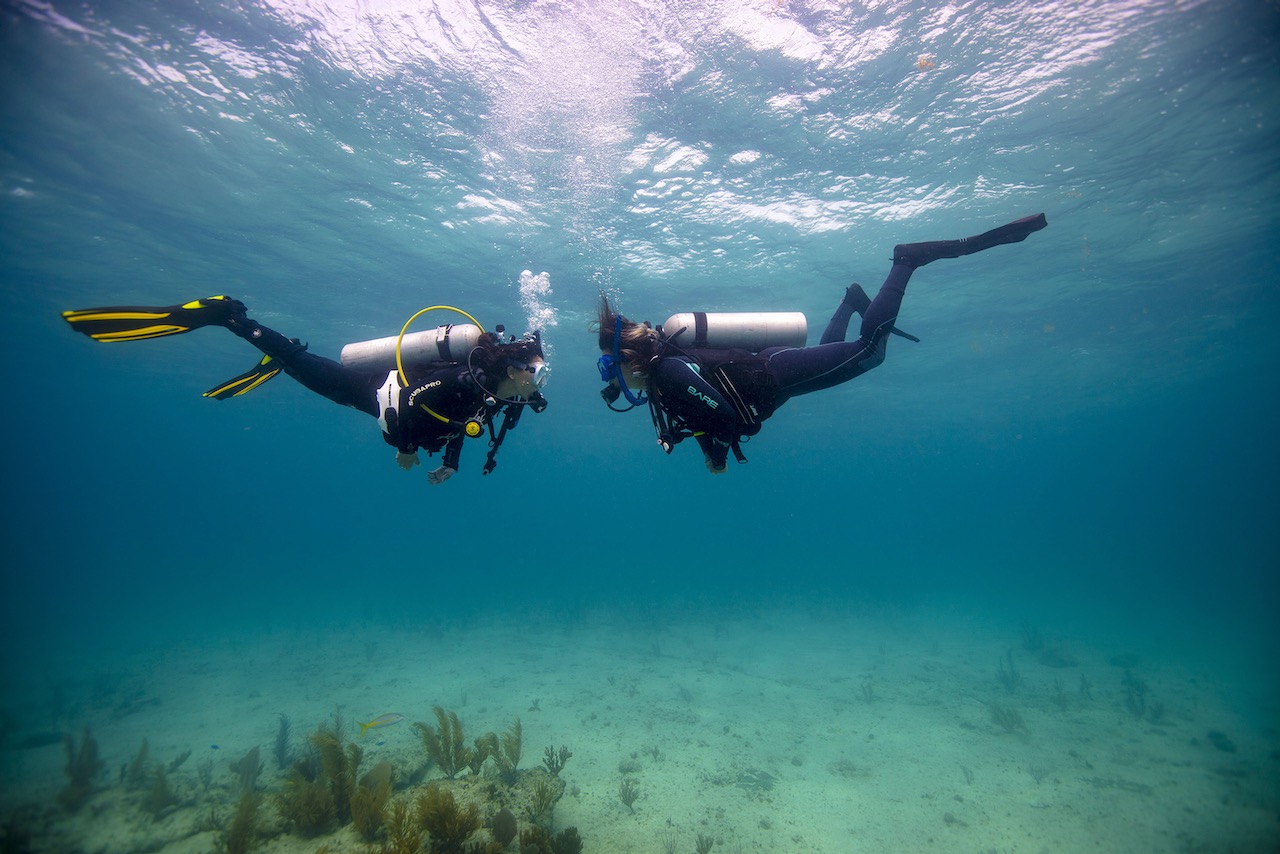
Steps to Becoming a PADI Instructor
The PADI IDC (Instructor Development Course) is the most recognized scuba diving instructor course in the world. The majority of the world’s most successful dive instructors gained the knowledge, skills and confidence required to start teaching scuba during their PADI Instructor Development Course. In post-course surveys, 95% of student divers say they would highly recommend their PADI Instructor.
Step One: Meet the IDC Prerequisites
The first step to becoming a scuba instructor is enrolling in an IDC. To start your dive instructor training, you must be at least 18 years old and meet the following requirements:
- Be a certified diver for at least six months
- Hold a PADI Divemaster certification (or qualifying certification from a different scuba diving organization)
- Have at least 60 logged dives
- Hold a current CPR and First Aid certification*
- Have an in-date medical approval to scuba dive
*IDC candidates must have a current (within the last 24 months) Emergency First Response (EFR®) certification or hold another qualifying CPr and First Aid certification. The EFR Instructor certification is required before you can start teaching.
How many dives do you need to become an instructor?
You only need 60 logged dives to enroll in a PADI IDC. 100 logged dives are required to receive your Instructor credential.
Step Two: Complete the IDC
The PADI IDC has two components: Assistant Instructor (AI) and Open Water Scuba Instructor (OWSI). You can complete them separately or all in one go.
As the name implies, the focus of the Instructor Development Course is learning how to teach, not perfecting your skills. By the time you start the IDC, you should already have excellent diving skills and professional-level knowledge of diving equipment, physics and physiology. In the IDC, you’ll learn how to share your knowledge and experience with others.
During the IDC, you’ll learn:
- How to give classroom presentations
- How to work with students in confined water (a pool or pool-like environment) and open water
- PADI’s 4E’s philosophy
- Risk management
- How to market yourself as a PADI Instructor
By the end of your PADI IDC, you’ll have the knowledge, skills and confidence to train scuba divers through all of PADI’s core recreational level courses as well as several specialties.
Here’s something most people don’t realize about becoming a scuba instructor: the things you learn in the IDC are helpful in other areas of life. In the PADI IDC, you’ll learn how to explain complex ideas, give constructive criticism in a positive manner and improve your confidence in public speaking.
How hard is it to become a dive instructor?
Different parts of the IDC will be easy for some and challenging for others. For example, the classroom presentations were easy for me. I’m comfortable speaking in front of people and PADI’s Guide to Teaching outlines everything you need to say. But others in my class were nervous and had a hard time at first. Meanwhile, I stressed out about the rescue exercise while other candidates (with long arms, I might add) completed it effortlessly every time.
It should also be noted that I started my IDC less than a year after I became a Divemaster. My skills were pretty sharp, and I had only forgotten about half of my dive theory (oops!).
Other IDC students hadn’t been active Divemasters for years. For them, the learning curve was a little steeper. The good news is: PADI is known for its high-quality instructional curriculum designed to accommodate students at various levels with different learning styles. It’s one of the main reasons the majority of dive instructors are PADI Instructors. Furthermore, PADI’s Instructor Trainers (known as Course Directors) are some of the dive industry’s most experienced and elite instructors.
Everyone is different and some parts of the IDC will be easy for some and challenging for others.
- By choosing PADI, you set yourself up for success.
- If it’s been more than a year or two since you became a Divemaster or assisted with classes, tell your Course Director. They might offer an IDC prep course or recommend ways to prepare for the IDC.
Step Three: Pass the Instructor Examination (IE)
After successfully completing the IDC, you’ll be eligible to take the PADI Instructor Examination (IE). Instructor Exams are conducted by PADI Examiners, who are friendly, experienced Course Directors and work for PADI. Examiners follow standardized criteria to ensure instructor candidates have the knowledge and skills to become safe, effective scuba instructors. These independent evaluators ensure the evaluation process is objective, fair and consistent worldwide.
Once you’re a PADI Instructor, you can apply for jobs on PADI’s international Job Board and enjoy other benefits of PADI Membership.
How Long Does It Take to Become a Dive Instructor?
If you meet all the prerequisites, you can complete the PADI IDC in as little as 10 to 14 days. Not every PADI IDC Center offers a consecutive day program, so be sure to inquire.
Prefer to take your time? Many IDC Centers scheduled scuba instructor training over the course of several weekends.
Learn more about choosing the best place to do your IDC.
Find Work (or Not!)
PADI dive instructors are in demand – not just for teaching scuba classes. Check out the PADI Job Board to see the many scuba instructor jobs available around the world, or read this list of nine scuba diving jobs you may not have considered.
It’s also totally fine to become a scuba instructor just so you can teach friends or family members to dive. You don’t have to quit your job and travel the world, but once you’re a scuba instructor, that option is always available.

